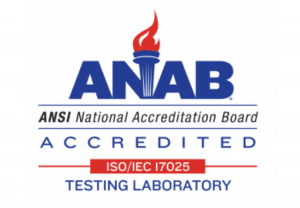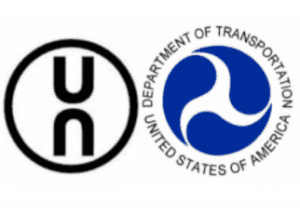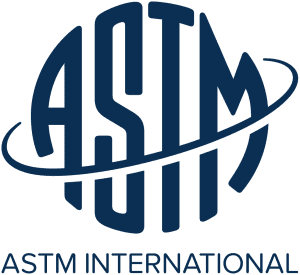Testing Standard:
ASTM D6653 Test Methods for Determining the Effects of High Altitude on Packaging Systems by Vacuum Method
Standard Number
ASTM D6653
Standard Title
Test Methods for Determining the Effects of High Altitude on Packaging Systems by Vacuum Method
Overview for ASTM D6653:
ASTM D6653 is a test method for deciding the effects of pressure differential when packaged products are transported via high mountain passes or planes. This test method is a general guideline to conduct the testing accurately with repeatable procedures. the results of these tests are intended to be used for qualitative purposes. Purple Diamond Testing offers ASTM D6653 Testing as part of our packaging integrity testing services. To learn more about the interpretation of the results of a test method like this, please consult with one of Purple Diamond’s packaging engineers. “If a distribution packaging system was assessed and the closure, shipping container, internal packaging, and product are intact and free of damage, then the packaging system should be reassembled for testing in accordance with an industry-accepted packaged-product performance test, such as Practice D4169. This will help decide if the pressure differential influenced the performance of the packaging system. It is recommended to assess a new test specimen with the same packaged-product performance test without the altitude conditioning for comparative purposes.” – Interpretation of Results, pg. 2, astm.org
Rationale for ASTM D6653:
ASTM D6653 – Test Methods for Determining the Effects of High Altitude on Packaging Systems by Vacuum Method. Its intended use is to evaluate the performance of packaging, products, or packed products in a high-altitude environment. This test method is commonly used in ASTM D4169 and ASTM D7386 to create specific hazards in a laboratory environment that are 100% repeatable. Packaged products transported by the feeder plane network may experience altitudes as high as 19,000 feet in the air. The simulation is possible by using the high-altitude vacuum testing method resource here at Purple Diamond’s on-site laboratory. The high-altitude test methods are suitable for evaluating the effect of high altitude on packaging systems as well as a particular package, product, or packaged product.
As mentioned, the vacuum chamber is used for this test method. The resource is seen as “a suitable chamber capable of withstanding in approximately one atmosphere pressure differential fitted with a flat-vacuum-tight cover or equivalent chamber providing the same functional capabilities, such as an altitude chamber.” – Apparatus, pg. 2, astm.org.
“Vacuum Gauge, Inlet Tube from a Source of Vacuum and Outlet Tube to the Atmosphere, shall be sealed to the chamber. The inlet and outlet tubes shall be equipped with hand operated valves. The vacuum gauge shall be laboratory quality with a full-scale range of 0 to 100 kPa [0 to 30 in. Hg] with minimum graduation no greater than 2 kPa [1 in. Hg] and accuracy to within 2 %.” – Apparatus, pg. 2, astm.org
The entire Chamber should be large enough to hold the sample specimen. There will need to be extra room and space in case of an expansion of the product or package or both.
Without a sampling plan for this test method, it is recommended that at least three specimens should be selected for the testing. A specimen shall consist of an assembled packaging system, a production run package, or certain parts of an assembled packaging system, to include primary or secondary packaging.
For the actual procedure, the test specimen is first placed in the vacuum chamber. Then the pressure should be set, and the vacuum should be kept for the duration of the test. The length of the test is decided by many varied factors and will vary depending on the packaged products that need to be shipped via air. Some factors to take into consideration include the shipping environment, the product value, the desired damage level acceptances, and other criteria. At the end of the test, the chamber should be opened slightly, and the vacuum rate shall be slowed. Results are recorded.
Key Points:
- Determines the ability for packaging to stay sealed to prevent product leaking during high altitude
- Evaluates the performance of the seal of packaging or products
- Consider using ASTM D4991 if testing empty rigid containers
- Consider ASTM D4169 and ASTM D7386 for multiple options to run performance tests that simulate unique distribution cycles that utilize ASTM D6653
Related Standards:
- ASTM D3078 – Test Method for Determination of Leaks in Flexible Packaging (Bubble Emission)
- ASTM D4169 – Practice for Performance Testing of Shipping Containers and Systems
- ASTM D4332 – Practice for Conditioning Containers, Packages, or Packaging Components for Testing
- ASTM D4991 – Test Method for Leakage Testing of Empty Rigid Containers (Vacuum Method)
- ASTM D5094 – Test Methods for Gross Leakage of Liquids from Containers with Threaded or Lug-Style Closures
- ASTM D7386 – Practice for Performance Testing of Packages for Single Parcel Delivery Systems
At Purple Diamond, we offer a free consultation or a guided tour of our facilities. Consultations can be done over the phone or on zoom, so choose what suits you best. To get in touch, go to our Contact Us page and fill out the form or book an appointment using the calendar below. Our goal is to assist you in any way possible, so please don’t hesitate to contact us. Thank you so much for reading down this far and thank you for considering Purple Diamond as your dedicated testing, engineering, and design facility for all of your packaging needs.
Related Testing Standards
- ASTM D642
- ASTM D685
- ASTM D880
- ASTM D951
- ASTM D999
- ASTM D3078
- ASTM D3103
- ASTM D3285
- ASTM D4169
- ASTM D4332
- ASTM D4728
- ASTM D5265
- ASTM D5276
- ASTM D5277
- ASTM D5487
- ASTM D6055
- ASTM D6179
- ASTM D6344
- ASTM D6653
- ASTM D7386
- ASTM F88
- ASTM F1140
- ASTM F1886
- ASTM F1929
- ASTM F1980
- ASTM F2096
- ASTM F2250
- ASTM F3039
- ASTM D1596
Contact Us
Accreditations
Affiliations








